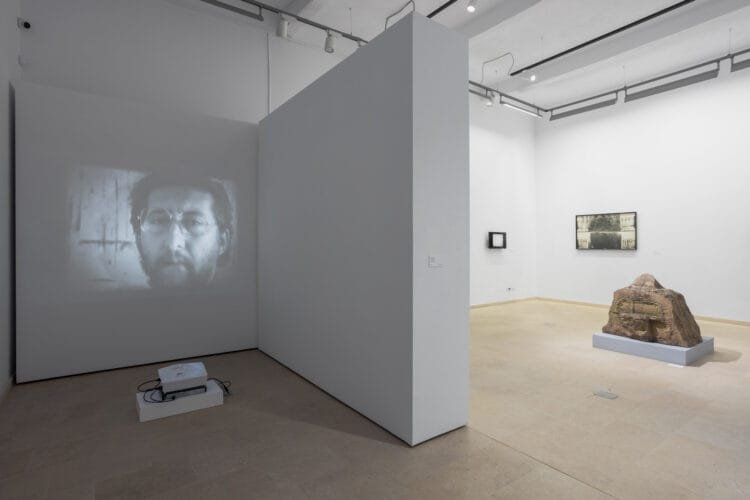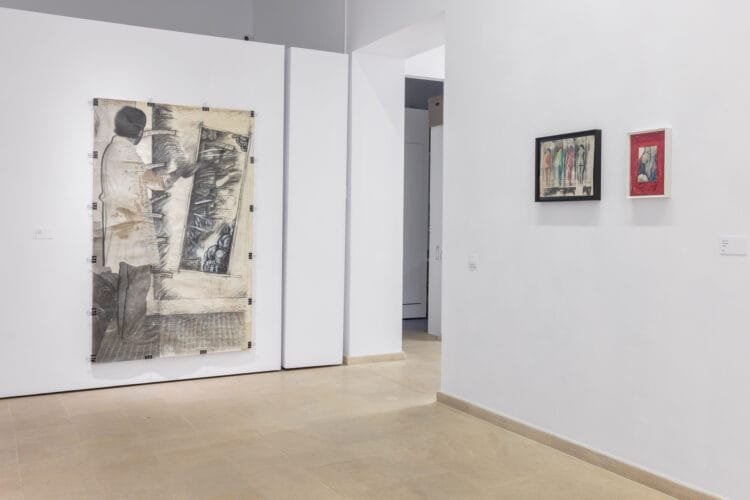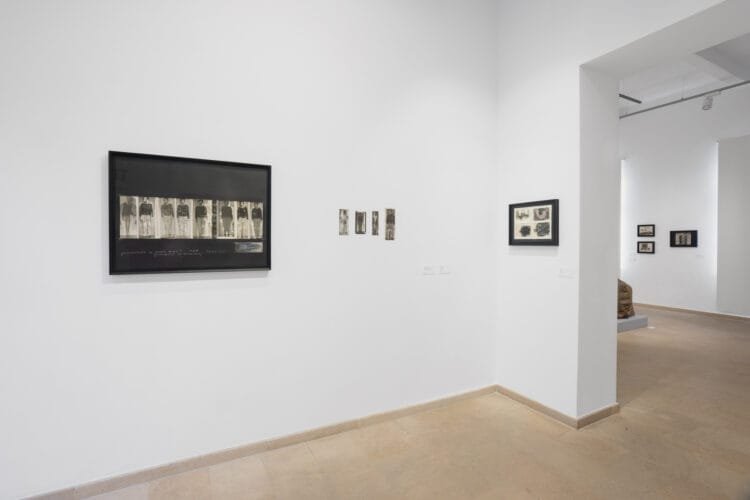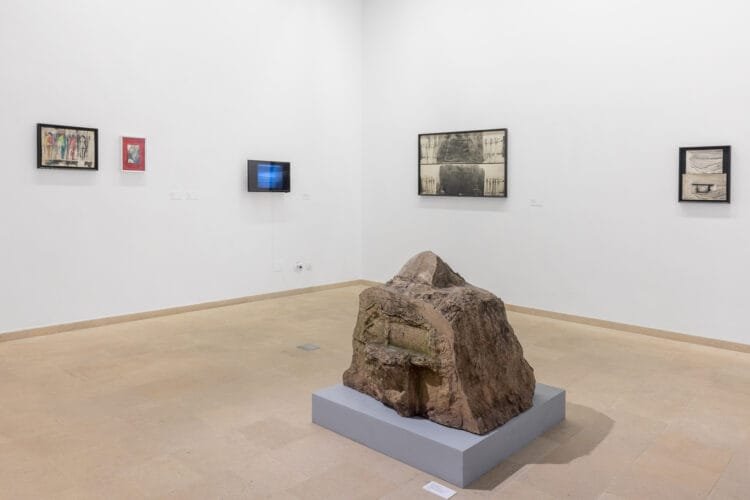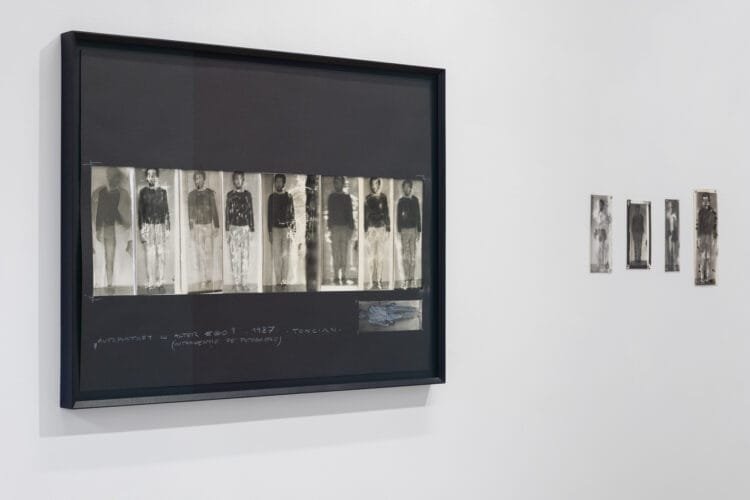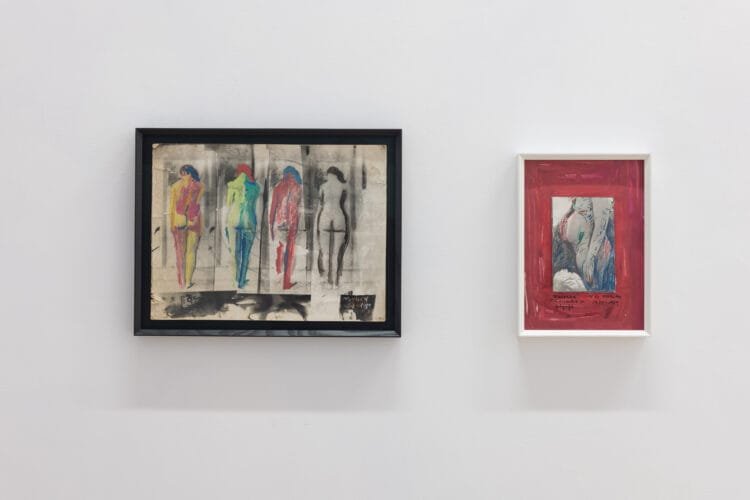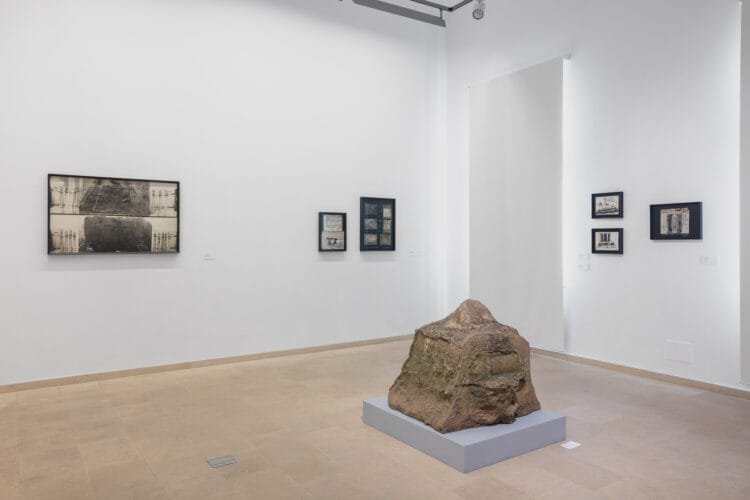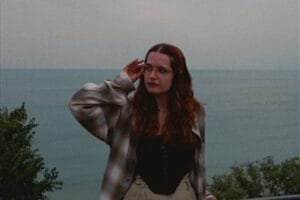“The experimental attitude defines that area of art and that type of artists whose creation inaugurates new methodologies of expression and communication”[1]. This is how art critic Alexandra Titu described experimentalism, a trend that began to proliferate in Romanian art with the period of cultural liberalization from 1965 to 1971, when the barriers between East and West were partially lifted and Western influences – the neo-avant-garde – were able to penetrate communist countries. From painting, sculpture, textile art, and ceramics to film, photography, and performance, experimentalism has a multitude of definitions and characteristics that differ from artist to artist: a passion for new technologies, a return to traditions, an exploration of aspects related to the human body or personal life, capturing everyday life, or blurring the boundaries between artistic media. Due to the ephemeral nature of some of these new movements, such as land art, performance art, or happenings, immortalizing them has become more than necessary, leading to the increasingly frequent use of photography, and later film, and their gradual transformation from simple documents into true works of art.
When it comes to experimentation in the field of photography and film, the names we encounter most often are Ion Grigorescu, Geta Brătescu, and the Sigma group from Timișoara, made up of artists and teachers Constantin Flondor, Doru Tulcan, and Ștefan Bertalan – all true pioneers in this field, with a body of work that has considerably influenced the evolution of contemporary art in Romania and helped shape the next generations of artists. What the exhibition curated by Székely Sebestyén at the Quadro Gallery does, however, is to recover a little-known piece from the experimentalist puzzle of the 1970s and 1980s, namely the early photographic and film works of ceramist Titu Toncian, which show a particular interest in reflection on the self, nature, and memory. Focused around a ceramic piece from the artist’s diploma work, the photographs and films presented here demonstrate not only how Toncian fits into the trends of alternative art in communist Romania, but also how he stood out through his personal mark, rendered especially through graphic and pictorial interventions on photographs.
Titu Toncian trained as a ceramist at the “Ioan Andreescu Institute” of Fine and Decorative Arts in Cluj-Napoca, under the guidance of professors such as Ana Lupaș and Mircea Spătaru, whose classes provided fertile ground for various experiments designed to broaden the students’ range of inspiration and truly put their creative spirit to the test. The artist’s diploma work, suggestively titled Memoria locului (Memory of Place, 1978-1979), is an example of this: starting from a photograph of a dry marshy area, the result of a flood, Toncian weaves the narrative thread of his project around nature as the bearer of memory, giving rise to a space similar to an archaeological site, from which several ceramic pieces emerge, like artifacts, parallelepiped in shape, with a semi-sharp tip. Through the photographs that documented the entire artistic process – from the preparatory models to the in situ installation – we are immersed in a landscape deeply marked by traces of memory, in a time that allows us to connect with a “lost world that could have existed,” as the author expresses in the text for his work.
The memory of the place was only the beginning of the artist’s journey into the world of experimentation, from which a subtle line was drawn connecting the rest of his works both thematically and technically. The theme of nature as the keeper of memory is revisited in Piedici în drumul transfugilor (Obstacles on the Road of Defectors, 1985), a video shot on ORWO Super 8 film, which contrasts the serenity of the Danube waves with the tragic situation of many Romanians who tried to flee the country to Yugoslavia. Their memory permeates the soil, permeates the water, and thus outlines a cruel intertwining of nature with the harmful effects of a totalitarian political regime. The second film in the exhibition, entitled Self-Portrait, 1985, encompasses, as one can guess from the title, the theme of self-representation and self-knowledge, but also that of playfulness. Positioned in front of the camera, the artist gradually covers the lens with several black strokes until his face is completely hidden, giving both himself and the viewer the opportunity to reflect on the question “Who am I?”
In terms of photographic repertoire, Toncian’s works reveal a purely experimental approach to exploring the self and the artistic act itself, all against a backdrop that does not shy away from revealing profound political implications. Collage and interventions on photographs are a constant in the artist’s work, through which he breaks down the barriers of the original artistic environment and makes way for his alter ego. In Self-Portrait with Alter Ego (1987), Toncian multiplies himself no less than nine times: although he adopts a similar position in all the images – standing upright, hands by his sides, looking into the camera lens – each version of himself is unique in the way the “other self” chooses to surface. The interventions are varied, ranging from faded, blurred portraits to graphic interventions, such as sketching a portrait over the original one or completely “smearing” the image, as well as plays of light that seem to capture the ghostly form of the artist’s self.
The ceramist’s alter ego takes on monumental forms in another mixed media work, in which photography and drawing intertwine. Here, Toncian is depicted with his back to the viewer, his attention directed toward what appears to be a portal to another dimension, more precisely to another self, which takes the form of a shadow. The artist’s hand is lost in the arm of the character sketched in front of him, symbolizing the connection with the self, while both look into a mirror that illustrates a distorted graphic image, a possible reference to the political context of the time, when Nicolae Ceaușescu’s directives led Romania into its darkest period. A political meaning can also be attributed to the work Strigăte (Cries, 1989), a collage of four photographs showing only the open mouth of a person – two from the front, two from the side. The artist’s interventions with black ink and white paste give the impression that the character in the photograph is trying hard to convey a message, but his words are censored, and all that remains is a fuzzy noise lost in nothingness.
As Székely mentions in the curatorial text, intimacy is also one of the predominant themes in the photographic works on display. This time, it is not the artist who multiplies himself in the secrecy of his studio, but a female body, nude, with her back to the camera: the four black-and-white sequences are painted over in a naive manner, with a color palette reminiscent of the Fauvist artists, except for the last image, in which the woman’s body is simply outlined with a black stroke. The accompanying work also falls into the category of female nudes, but differs in that the foreground features the body of a pregnant woman, the image being pasted onto a red background – the only splash of color of this kind in the entire exhibition. Suggestively titled Creation (1988-1989), this photograph was also altered by the artist’s graphic interventions, who outlined the body and accentuated its fine features using shades of red, blue, and green.
Like in a circular narrative, collages documenting the artist’s diploma project are found at the beginning, middle, and end of the exhibition, keeping the memory of the place as alive as possible. Intertwining photographic and film works with a central ceramic piece, the exhibition “Titu Toncian: Self-Portrait. Photography and Film Experiment” has not only succeeded in bringing a true representative of Romanian experimentalism back into the public eye, but also in instilling that atmosphere of “going back in time” that the artist has carefully cultivated in his projects, best described in his theoretical work: “I opposed the tragedy of disappearance with the chance of rediscovery and the joy that comes with it.”
[1] Titu, Alexandra. “Experimentalism in Romanian Art after 1960,” in Experiment in Romanian Art after 1960, Madga Cârneci (ed.), Bucharest: Soros Center for Contemporary Art, 1997, p. 11.
Translated by Marina Oprea
POSTED BY
Timea-Andrada Toth
Timea-Andrada Toth (b. 2000) is a graduate of Art History and is currently a doctoral student at the Doctoral School "History. Civilization. Culture" (Babeș-Bolyai University). The subject of her res...
